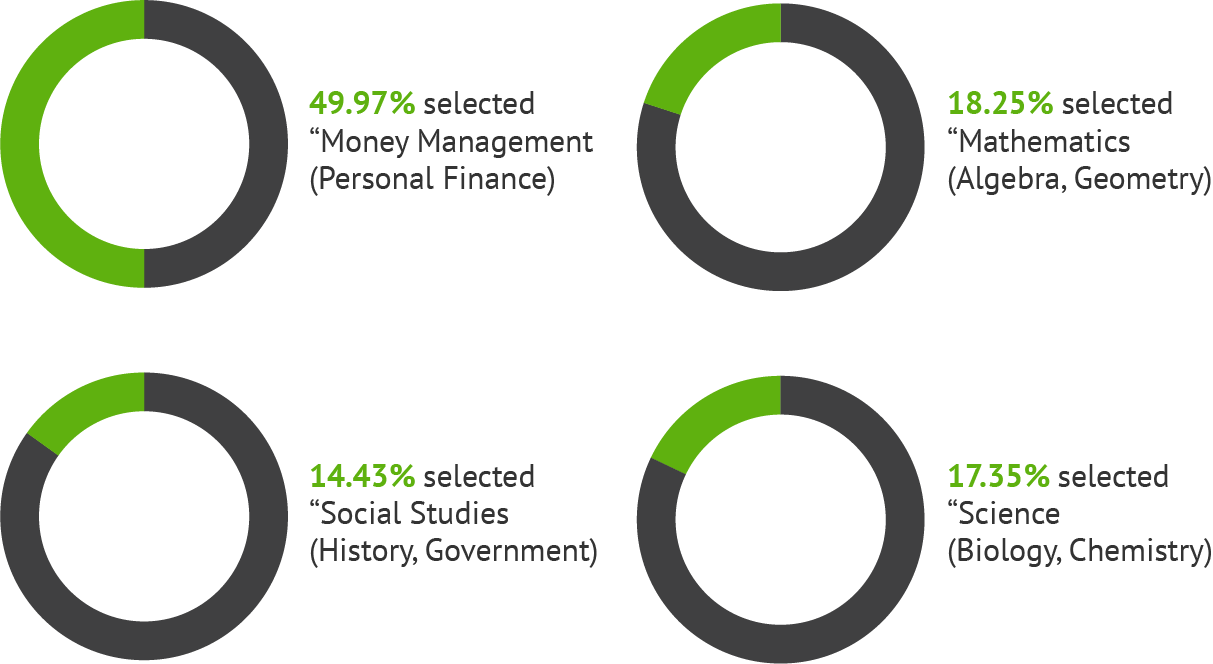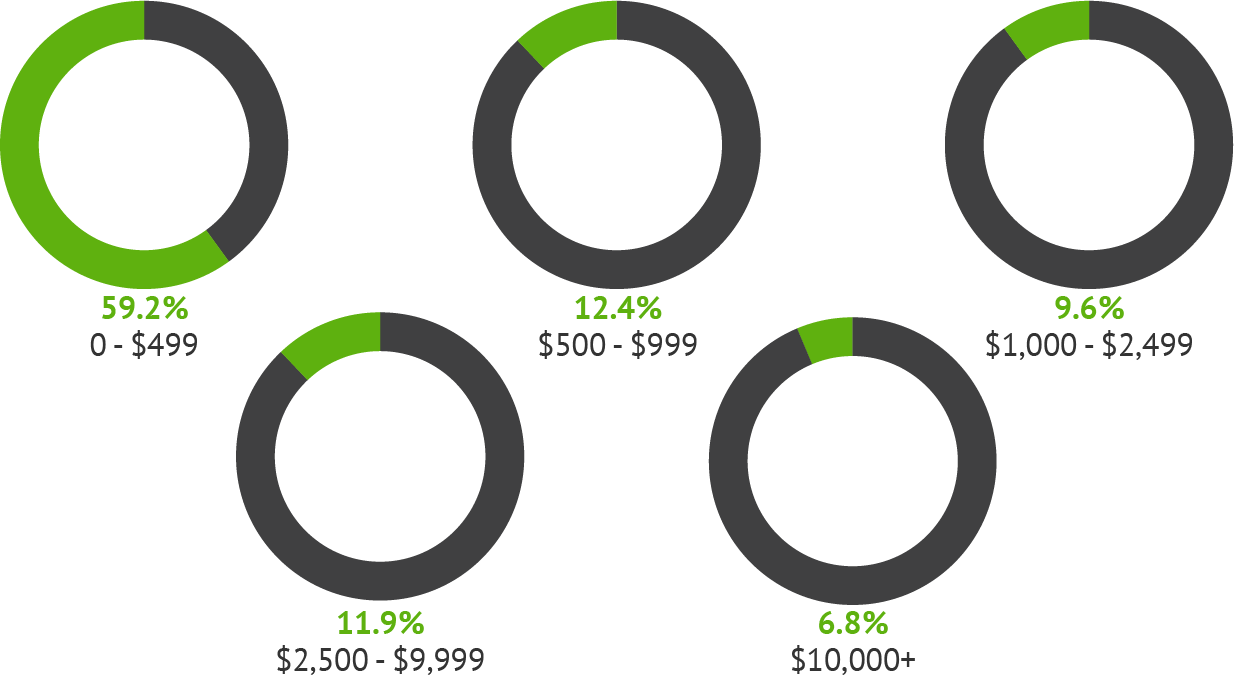NFEC Publishes Financial Education Survey Results
The National Financial Educators Council (NFEC) offers statistics produced by analyzing data from a financial education survey and other research efforts, including polls and think tank whitepapers. Their ongoing series of studies examines financial wellness levels, attitudes toward money, and money management behaviors. The primary goal of these financial literacy survey courses of study is to generate accurate data that can be shared with the financial education industry, mainstream media, and the public.
See Results of 2017 Financial Education Survey
Among 5,123 young adult Americans across the US who completed a financial education survey, nearly 50% answered “money management” in response to the question, “What high school-level course would benefit your life the most?” This money management research survey was performed between July 15 and 17, 2017, with young people aged 18 to 24 participating.
Then the NFEC asked respondents, “During the past year, about how much money do you think you lost because you lacked knowledge about personal finances?” The answers averaged out at $1,171 over the past year – with 6.8% of participants saying they’d lost over ten thousand dollars from lacking money skills. Therefore gaining money knowledge could be worth a lot.
People and Instructors can Benefit from Financial Education Survey
Both individuals and financial educators can use the NFEC’s financial education survey and/or its results. An educator might conduct a financial literacy pop quiz to gain clarification regarding where students currently stand in terms of their financial lives in order to measure change after the coursework is complete. The instructor might ask questions about students’ income, savings, debt loads, credit scores, and investments, for example.


